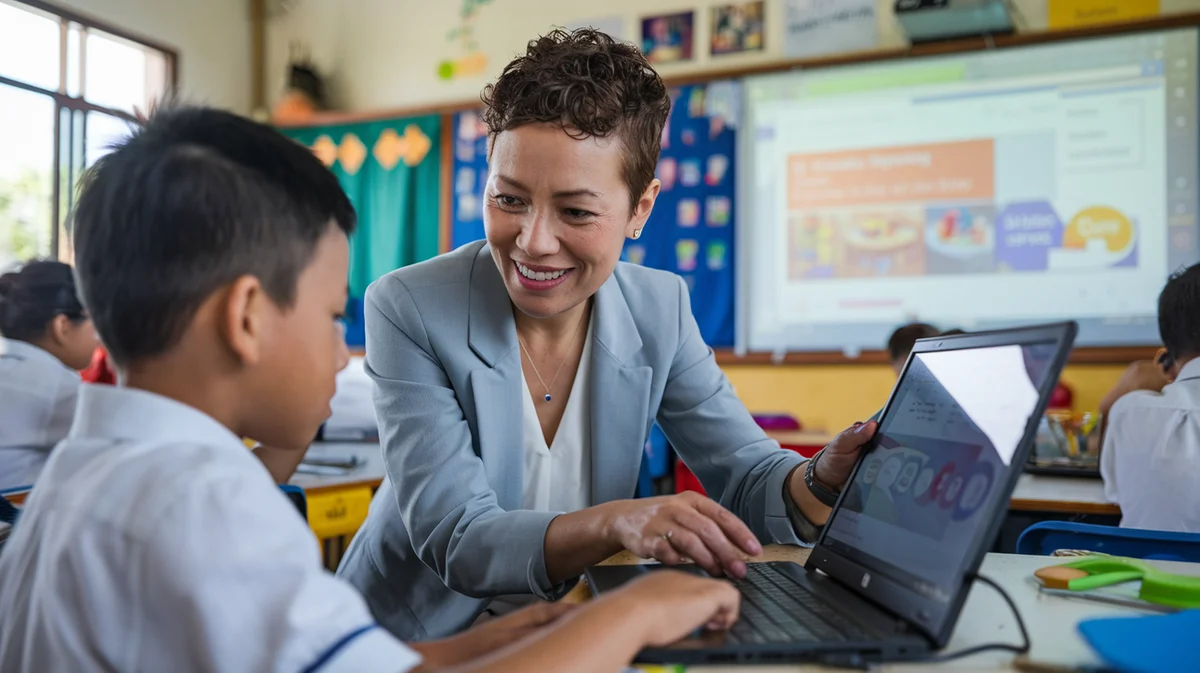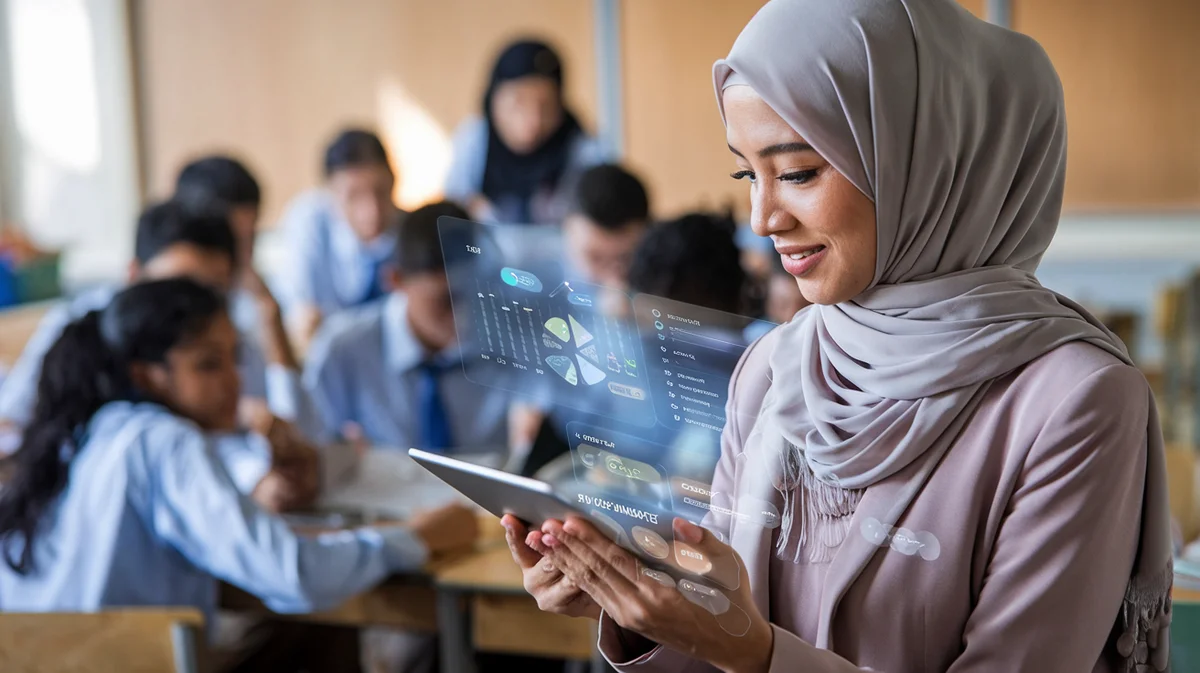Localized STEM Education: Customizing Tools for Local Curricula


wp:paragraph
As educational landscapes evolve across Europe, MENA, and CIS regions, the need for localized STEM education has never been more urgent. At UNOWA, we are committed to empowering institutions, educators, and students by designing and delivering STEM tools that are not only innovative but also deeply aligned with local curricula and cultural contexts. This article explores the strategies, challenges, and proven approaches to customizing STEM tools for maximum impact, drawing on global reform projects and the latest policy developments.
/wp:paragraph
wp:heading {"level":2}
Why Localized STEM Education Matters
/wp:heading
wp:paragraph
The drive to tailor STEM (Science, Technology, Engineering, Mathematics) tools for local curricula is at the heart of education reforms worldwide. The European Commission’s 2025 STEM Education Strategic Plan, for example, sets ambitious targets: by 2030, at least 45% of vocational students and 32% of tertiary students in the EU should be enrolled in STEM fields, with a strong emphasis on gender balance and inclusivity. Similar priorities are echoed in MENA and CIS countries, where governments are investing in modern, adaptable educational systems to meet the demands of rapidly changing economies.
/wp:paragraph
wp:paragraph
Key Value for Readers: Customizing STEM tools ensures relevance, increases student engagement, and supports national development goals.
/wp:paragraph
wp:heading {"level":2}
Key Facts and Statistics
/wp:heading
wp:list
- EU 2030 STEM Targets: 45% of vocational students and 32% of tertiary students in STEM fields, with at least 25% and 40% female participation, respectively.
- Industry Collaboration: The European STEM Executive Panel, established in 2025, provides strategic guidance for curriculum modernization and industry engagement.
- Funding Opportunities: EU programs like Erasmus+ and national initiatives are channeling significant resources into STEM reforms.
- STEAM Integration: Projects like Road-STEAMer are leading the way in blending STEM with arts and humanities to foster creativity and inclusiveness.
/wp:list
wp:paragraph
Read more about the EU STEM Education Strategic Plan
/wp:paragraph
wp:heading {"level":2}
Customizing STEM Tools: Strategies for Success
/wp:heading
wp:heading {"level":3}
1. Curriculum Alignment
/wp:heading
wp:paragraph
To maximize impact, STEM tools must be closely aligned with national and local curricula. This involves:
/wp:paragraph
wp:list
- Mapping content to specific learning objectives and standards.
- Ensuring compatibility with assessment frameworks.
- Collaborating with curriculum authorities to maintain relevance.
/wp:list
wp:paragraph
At UNOWA, we work hand-in-hand with ministries of education and local experts to ensure our solutions fit seamlessly into existing educational structures.
/wp:paragraph
wp:heading {"level":3}
2. Cultural and Linguistic Adaptation
/wp:heading
wp:paragraph
Localization goes beyond translation. Effective STEM tools reflect local languages, cultural references, and societal values. For example:
/wp:paragraph
wp:list
- Adapting examples and case studies to local industries and environments.
- Incorporating regional history and achievements in science and technology.
- Designing interfaces and materials that are accessible to diverse learners, including those with special educational needs.
/wp:list
wp:paragraph
Professional Advice: Invest in co-creation with local educators and students to ensure authenticity and resonance.
/wp:paragraph
wp:heading {"level":3}
3. Inclusivity and Accessibility
/wp:heading
wp:paragraph
Inclusive education is a cornerstone of our mission. Customizing STEM tools means:
/wp:paragraph
wp:list
- Designing for universal access, including materials for students with disabilities.
- Actively encouraging participation from girls and underrepresented groups.
- Providing differentiated instruction and adaptive technologies.
/wp:list
wp:paragraph
As highlighted by the Road-STEAMer project, integrating arts and humanities (STEAM) can foster broader skills and make STEM more accessible to all learners.
/wp:paragraph
wp:paragraph
Learn more about inclusive education strategies
/wp:paragraph
wp:heading {"level":3}
4. Teacher Empowerment
/wp:heading
wp:paragraph
Teachers are the linchpin of successful STEM education. We prioritize:
/wp:paragraph
wp:list
- Continuous professional development tailored to local needs.
- Resources and training for effective use of new tools.
- Support networks and communities of practice.
/wp:list
wp:quote
“We must improve teachers’ working conditions as a key foundation to revert the negative trends on STEM-related skills in Europe.” — Roxana Mînzatu, Executive Vice-President of the European Commission for Social Rights and Skills
/wp:quote
wp:heading {"level":3}
5. Industry and Community Engagement
/wp:heading
wp:paragraph
Bridging the gap between education and the workforce is essential. Our approach includes:
/wp:paragraph
wp:list
- Collaborating with local businesses to ensure curricula reflect real-world needs.
- Offering students hands-on experiences and exposure to STEM careers.
- Engaging parents and communities to build support for STEM initiatives.
/wp:list
wp:paragraph
Explore best practices for industry-education collaboration
/wp:paragraph
wp:heading {"level":2}
Overcoming Challenges
/wp:heading
wp:paragraph
Despite significant progress, several challenges persist:
/wp:paragraph
wp:list
- Declining STEM Skills: Many countries report falling performance in STEM subjects, particularly among disadvantaged groups.
- Gender Gaps: Female participation in STEM remains below targets in most regions.
- Resource Disparities: Rural and underserved areas often lack access to high-quality STEM education.
- Localization Complexity: Adapting global tools to local contexts requires investment and expertise.
/wp:list
wp:paragraph
At UNOWA, we address these challenges by leveraging our 15+ years of experience and a robust network of local partners. Our solutions are designed for scalability and adaptability, ensuring no learner is left behind.
/wp:paragraph
wp:heading {"level":2}
Success Stories: Global Reform in Action
/wp:heading
wp:heading {"level":3}
Poland, Estonia, and Malta
/wp:heading
wp:paragraph
These countries have piloted innovative STEM curricula and teacher training programs with support from EU-wide coordination and funding. Their success demonstrates the power of aligning national strategies with broader European goals.
/wp:paragraph
wp:heading {"level":3}
Road-STEAMer Project
/wp:heading
wp:paragraph
The STEAM Roadmap, presented at the 2025 Skills Summit, offers a comprehensive vision for integrating creativity and inclusiveness into science education. This model is now being adapted in multiple countries to address local needs and priorities.
/wp:paragraph
wp:paragraph
Discover the Road-STEAMer project
/wp:paragraph
wp:heading {"level":3}
MENA and CIS Initiatives
/wp:heading
wp:paragraph
Countries like Kazakhstan, Saudi Arabia, and Georgia are investing in modern STEM labs, digital platforms, and teacher training, often in partnership with international organizations. These efforts are transforming learning experiences and preparing students for the future workforce.
/wp:paragraph
wp:paragraph
Read about UNESCO’s STEM initiatives in MENA
/wp:paragraph
wp:heading {"level":2}
Expert Insights
/wp:heading
wp:quote
“A culture of continuous learning is essential for addressing skills gaps and keeping pace with technological advancements.” — Gina Vargiu-Breuer, Chief People Officer, SAP
/wp:quote
wp:heading {"level":2}
Policy and Funding Landscape
/wp:heading
wp:list
- EU Strategic Framework: Provides a roadmap for national reforms, with member states setting their own targets and strategies.
- European Semester: Ensures STEM remains a priority in economic and social policy.
- National Guidelines: Ministries of education in MENA and CIS regions are issuing new policies to support localized STEM education and teacher development.
/wp:list
wp:paragraph
Find out more about EU education policy
/wp:paragraph
wp:heading {"level":2}
How UNOWA Empowers Localized STEM Education
/wp:heading
wp:paragraph
At UNOWA, we are at the forefront of developing cutting-edge educational solutions that are adaptable to national standards and ready for large-scale impact. Our comprehensive approach includes:
/wp:paragraph
wp:list
- Curriculum-Aligned Content: Tailored to local requirements and learning outcomes.
- Inclusive Education (MIKKO): Materials and tools designed for all learners, including those with special needs.
- STEM Innovation (Ulabs): Modern labs and digital platforms that inspire creativity and critical thinking.
- Training and Analytics: Empowering educators with the skills and insights needed for continuous improvement.
/wp:list
wp:paragraph
With over 300 national projects delivered, we are a trusted partner for ministries, institutions, and education leaders across the EU, MENA, and CIS regions.
/wp:paragraph
wp:paragraph
Learn more about our solutions at UNOWA
/wp:paragraph
wp:heading {"level":2}
FAQ: Customizing STEM Tools for Local Curricula
/wp:heading
wp:paragraph
Q: Why is localized STEM education important? A: Localized STEM education ensures that learning materials are relevant, culturally appropriate, and aligned with national standards, leading to better student engagement and outcomes.
/wp:paragraph
wp:paragraph
Q: How do you ensure STEM tools are inclusive? A: We design tools with universal access in mind, provide materials for special education needs, and actively promote participation from underrepresented groups.
/wp:paragraph
wp:paragraph
Q: What role do teachers play in successful STEM reform? A: Teachers are central to effective STEM education. We invest in their professional development and provide ongoing support to help them integrate new tools and methodologies.
/wp:paragraph
wp:paragraph
Q: How do you align STEM tools with local curricula? A: We collaborate with ministries, curriculum authorities, and local experts to map our content to specific learning objectives and standards.
/wp:paragraph
wp:paragraph
Q: What funding opportunities exist for STEM education reform? A: EU programs like Erasmus+, as well as national and international initiatives, provide significant funding for STEM curriculum modernization and teacher training.
/wp:paragraph
wp:paragraph
Empowering educators to create a brighter future for all students is our mission. Let’s work together to transform learning experiences for the better.
/wp:paragraph
wp:paragraph
Contact us for a consultation and discover how we can support your journey toward inclusive, localized STEM education.
/wp:paragraph








